(March 24) During the Purim events for children in the community Nov siren sounded of a Hezbollah UAV penetrating Israel (Photo: Ilan Yosiphon)
Key insights:
- Hezbollah’s leading weapon continues to be rocket fire, but this is in addition to the use of anti-tank missiles. It is possible that the decline in the use of anti-tank missiles and the increase in the use of rocket fire is related to a decrease in Hezbollah fatalities, and that the IDF’s activity against squads firing anti-tank missiles at Israel is effective. This is in addition to a significant increase in Hezbollah’s use of UAVs.
- This week, we witnessed another series of events that maintains the equation of attacks between Israel and Hezbollah. A Hezbollah airstrike on Kfar Blum (March 23) was followed by an attack on a quality target deep within Lebanon, described as a “weapons manufacturing workshop” (according to the equation generated, the target may be linked to Hezbollah’s aerial system). Hezbollah’s reaction to the Baalbek attack, which included the launch of approximately 60 missiles that Hezbollah said were intended to damage Israeli bases in the Golan Heights, aimed to maintain the mutual equation.
The Lebanese arena:
War data:

In Israel, the government evacuated 43 communities located up to five kilometers from the Lebanese border. A total of about 61,000 citizens. To them were added several thousand more who decided to evacuate independently.
It should be noted that not all Israeli communities have been totally evacuated, and there is still a civilian presence. This is because these communities rely on tourism and agriculture. Farmers come to work on the land, in the orchards, tending to cow and goat herds. Furthermore, some of the communities’ industrial plants are still operational and employ workers from non-evacuated areas.
The Israeli government has extended the evacuation period until the summer of 2024 (July/August 2024).
Hezbollah has killed 5 Israeli civilians and 1 agricultural worker with foreign citizenship so far. A total of 6 civilians were killed.
During the past week, Hezbollah claimed responsibility for 51 rocket launches and rockets fired at Israel (including Falaq-1 and Grad), anti-tank missiles, and drones.
No one claimed responsibility for eleven other occurrences, most of which were UAV infiltrations into Israeli territory, as well as two incidents involving anti-tank and rocket fire.
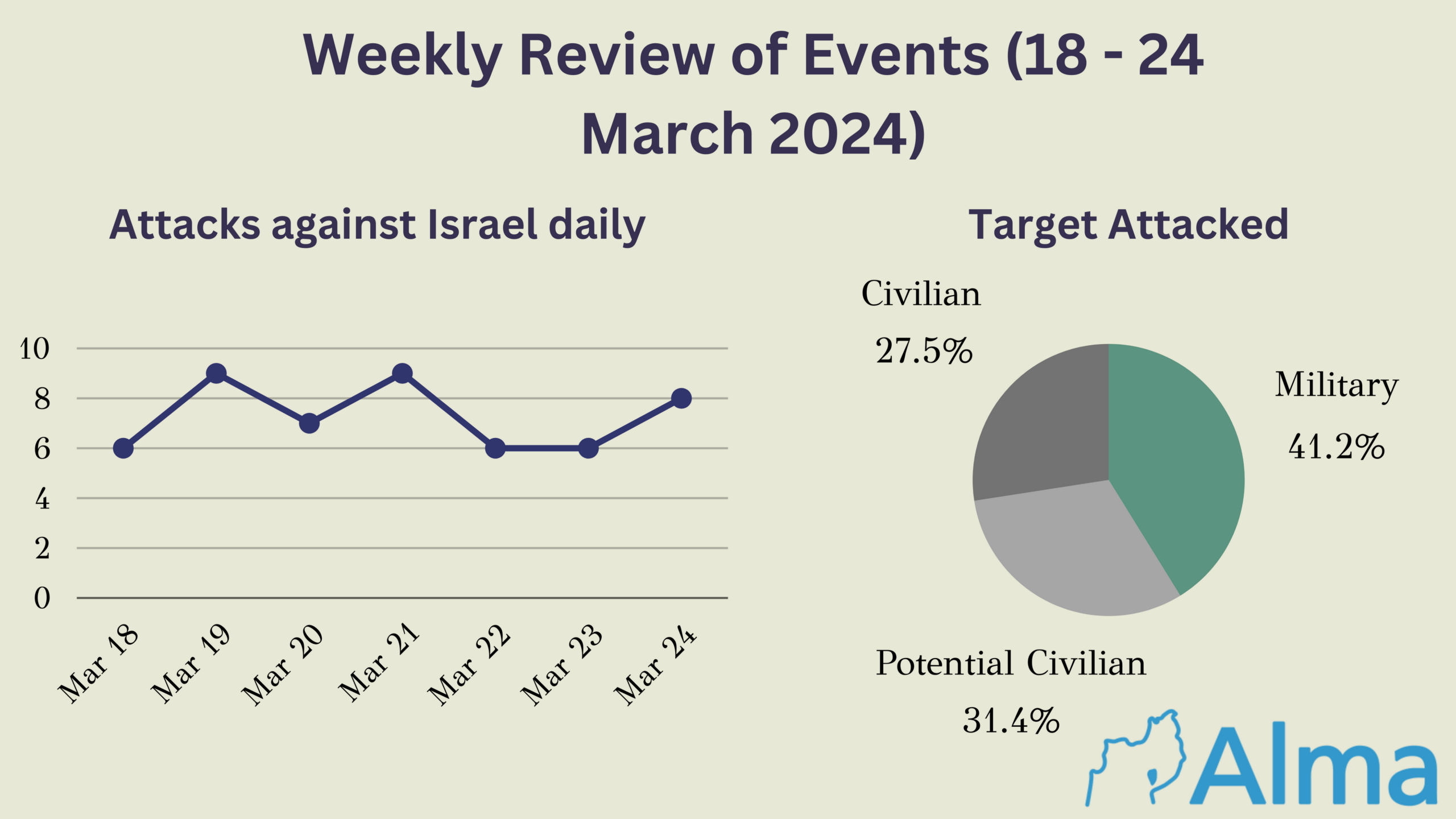
This week, the average number of responsibilities claimed was approximately seven per day. Furthermore, about 60% of the targets this week were or might have been civilian. Potential civilian targets are occurrences in which high-velocity fire is directed against areas designated by Hezbollah as military targets. However, these are high-trajectory targets with a significant risk of causing harm to civilian communities.
This week, as has been the case throughout March, it has been clear that rockets are Hezbollah’s primary weapon. Since the beginning of the month, Hezbollah has launched at least 122 rockets into Israeli territory, three times more than anti-tank missile fire (at least 46 incidents). Furthermore, Hezbollah’s use of UAVs has increased significantly. Since the beginning of March, Hezbollah has carried out at least 28 infiltrations or attacks, four times more than in February.
Prominent launching and shooting incidents against Israel:
On March 21 Hezbollah claimed responsibility for nine attacks against Israel, all aimed at civilian targets. On the same day, the communities of Metula, Avivim, Ramot Naftali, Dovev, Malkiya, Zarit, Netua and Shlomi were attacked.
On March 24, about 60 Grad rockets were fired at the Golan Heights.
Hezbollah casualties:
During the past week announcements were released reporting two Hezbollah and one Amal operatives killed.
As of October 8, 2023, a total of 246 Hezbollah operatives have been killed. Most of the operatives killed live south of the Litani River (161 operatives killed, constituting 66% of all the operatives killed). Many Hezbollah operatives and their families live in southern Lebanon near the border with Israel. They operate in southern Lebanon as part of Hezbollah’s geographic units (Nasser/Aziz) and Hezbollah’s designated units (Radwan unit), while assimilating into the civilian population (human shield tactics).

Amal movement operative killed Muhammad Ali Musa Kamika from the village of Sir:
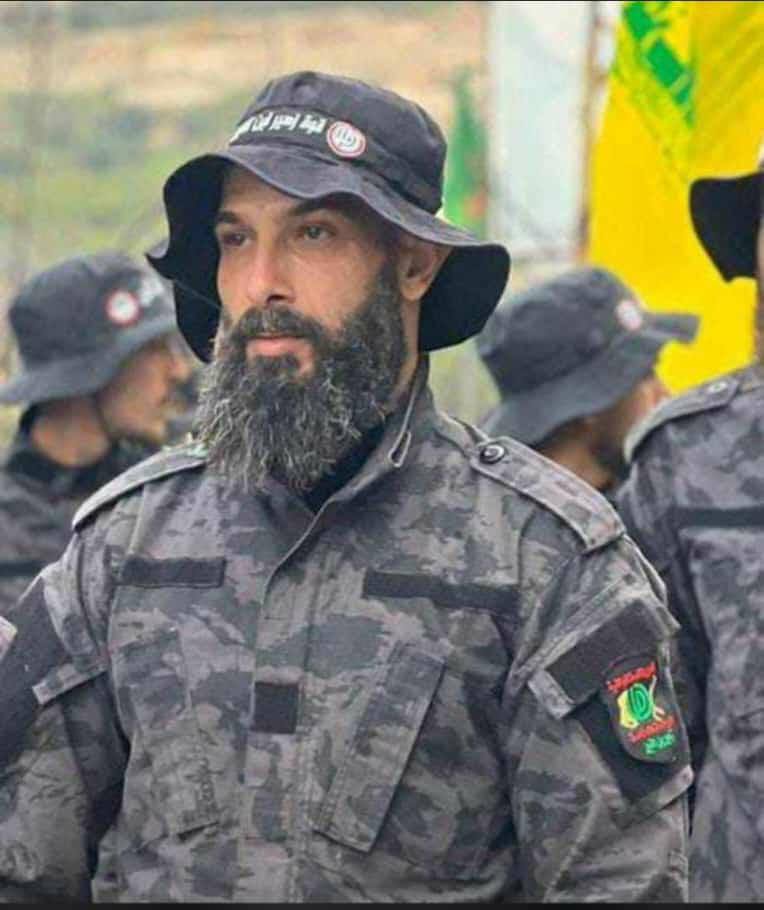
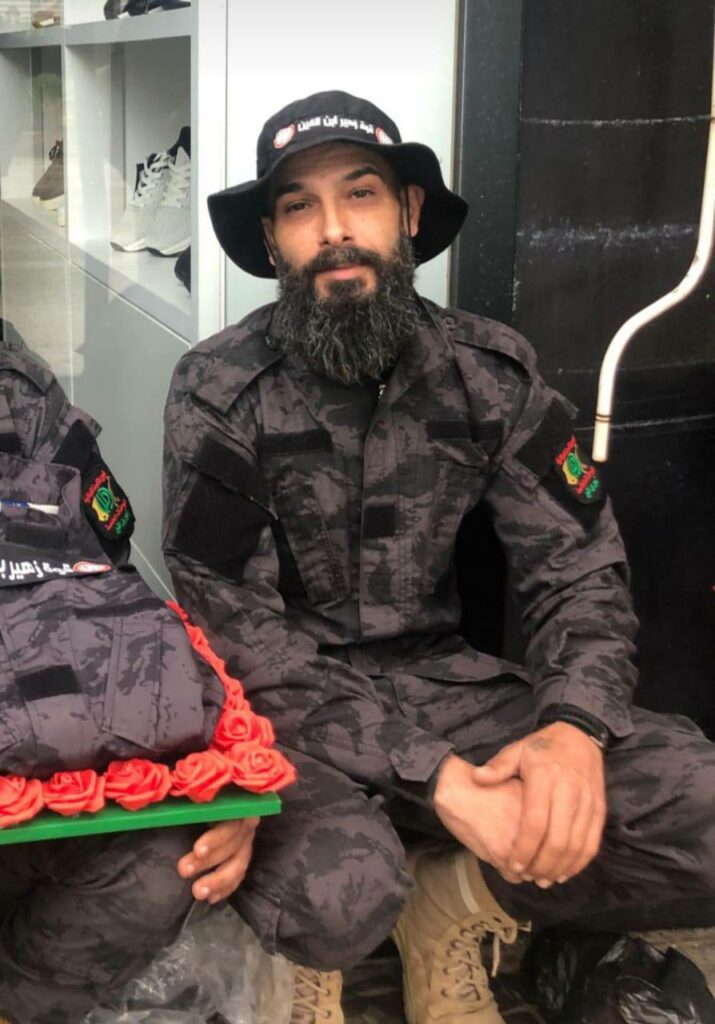
Prominent attacks in Lebanon:
(March 23) The IDF attacked a weapons manufacturing site in Baalbek, which serves also as Hezbollah’s logistical rear, located about 100 km deep in Lebanon. This is the fourth attack carried out by the IDF in this area since the beginning of the war.
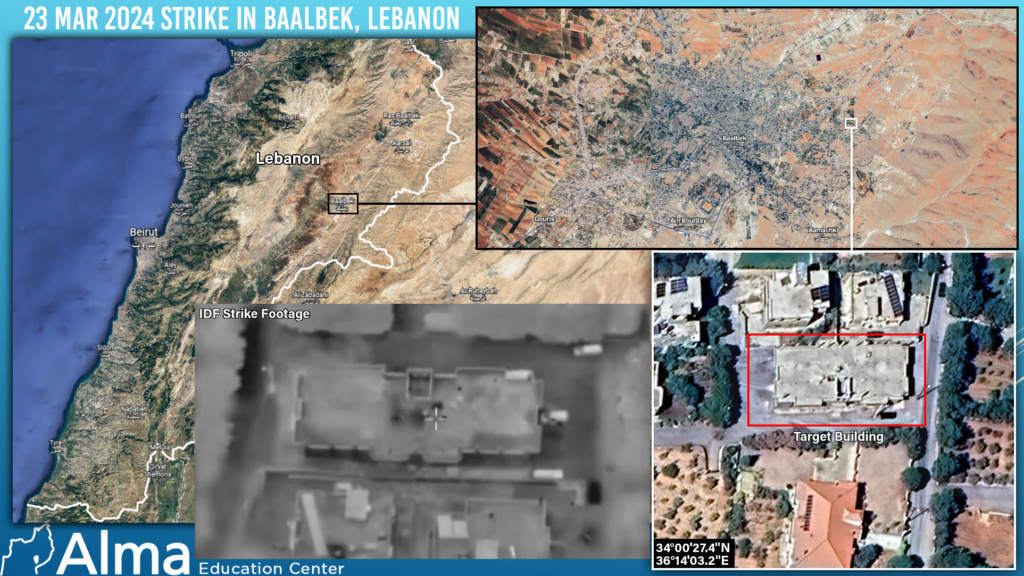
(March 24) An airstrike appears to have targeted a vehicle in the Lebanese village of a-Souairi in the southeastern Bekaa Valley. The incident occurred only around 2.5 kilometers from Syria’s primary border crossing with Lebanon, the Al-Masnaa crossing, which Hezbollah frequently utilizes. According to local accounts, two Syrians were killed in an alleged vehicle attack.

Hezbollah – General:
(March 18) According to Lebanese reports, Wafiq Safa, the chief of Hezbollah’s coordination and liaison branch, flew to the Emirates onboard a business jet. The purpose of his trip is apparently to try to free for the occasion of Ramadan a number of Lebanese (Hezbollah operatives?) detained there.
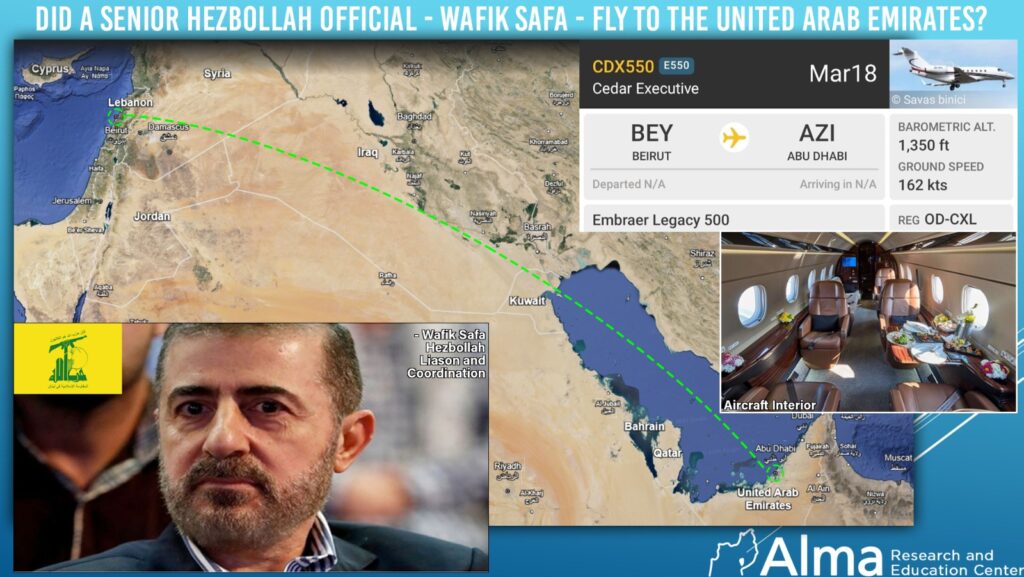
(March 18) Makram Rabah, a professor and historian, was detained by Lebanese General Security following a lecture he gave criticizing Hezbollah. Rabah said upon his release that his incarceration proved that the whole Lebanese state was under Hezbollah’s control.
See our article on the subject
(March 18) Al-Amana Stations Company, together with Hezbollah’s Jihad al-Banaa, announced an initiative to replant thousands of olive trees in the areas of villages damaged on the border in southern Lebanon.
(March 19) The IDF Spokesperson’s Office reported on the use of ambulances in southern Lebanon for terrorist purposes. According to estimates, ambulances are used to transport operatives between locations and to transport weapons or equipment for terrorist activity. The phenomenon of using ambulances to transport weapons and operatives has been known to us since the Second Lebanon War in 2006. To remind you that Hamas also exploited and still extensively exploits its medical and health infrastructures for military use.
Operatives of Hezbollah’s Islamic Health Organization, under which Hezbollah’s Civil Defense Organization also operates, are directly involved and participate in military activity. For example, two operatives, Musa and Jihad Shait, who operated the ambulance in the village of Kila, which served as a platform for terrorist activity, were recognized by Hezbollah after their deaths as members of Hezbollah’s military-terrorist wing.
Hussein Khalil, a Baraachit resident who was killed in an attack in Blida in February 2024, was earlier photographed armed and wearing an Amal-branded tactical vest. After his death, it was revealed that he was a medic in the group.
During Ramadan weeks, Hezbollah conducts many religious, cultural, and social activities. For example, Hezbollah’s social activities during the first week of Ramadan were divided as follows: cleaning 12 mosques, distributing 2704 food rations, distributing 101 candy boxes, hospitalization assistance for 14 people, distributing 3699 iftar meals (breaking the fast), and more.
The number of social solidarity committee activities in Sidon and its environs during the first week of Ramadan reached 4,911 social activities, and the number of beneficiaries reached 8,596 at a total cost of $107,696.


Lebanon – General:
(March 20) Lebanese Prime Minister Najib Mikati declared that the government would compensate victims of Israeli attacks in southern Lebanon. According to his statement, the government will pay $20,000 to the families of every shaheed (including Hezbollah and other terrorist organization operatives killed) and $40,000 to each destroyed housing unit, assuming mechanisms are established to determine compensation for partial damage to homes, shops, and public and private facilities. According to unofficial data, the number of fully destroyed housing units surpasses 1,000.
With the publishing of Mikati’s words, an internal Lebanese conflict erupted over this subject. Hezbollah’s opponents slammed the statement, stating that reparations should come from Hezbollah and Iran, the parties responsible for the conflict, rather than the Lebanese government, which lacks the funds. There were also allegations that the government did not develop a payment mechanism, did not undertake a damage assessment, and did not outline the steps and compensation plan.
(March 21) This week, a riot broke out at the major school in Jounieh, Lebanon, over an educational paper titled “All types of families” that included same-sex parents. The court called several teachers to a hearing, claiming that the material encouraged sexual deviance that violated moral, educational, and natural law values. Following an examination, it was discovered that the document’s objective was to raise awareness about orphanhood in families. See our article on the subject


(March 24) Ramish – Palm Sunday and tension with Hezbollah: Sunday, March 24 marked Palm Sunday, which begins on the Sunday before Easter and marks the entry of Jesus into Jerusalem. Despite the events of the war, a large crowd of Ramish citizens in southern Lebanon came to the center of the village and held a joyous procession combined with music and the reading of Christian prayers.
The commemoration of the holiday events in Ramish caused much controversy on social media. Many Lebanese, Christian and Shi’ites argued on social networks about holding the march against the backdrop of the war.

The Syrian arena:
Prominent airstrikes in Syria:
(March 19) Two Hezbollah weapons depots were attacked in the area of Yabrud and Al-Nasiriyah, northeast of Damascus. This happened two days after another attack carried out in the same place (March 17). This is the geographical area between Al-Nasiriyah (a military airport) and Al-Merah, where there are a number of military sites.

(23 march) According to local reports, which have not been verified, an airstrike may have been carried out on targets located in northwestern Damascus. According to these reports, the attacks were aimed at two weapons depots near the town of Jadida a-Sheibani in the Wadi Barada area.
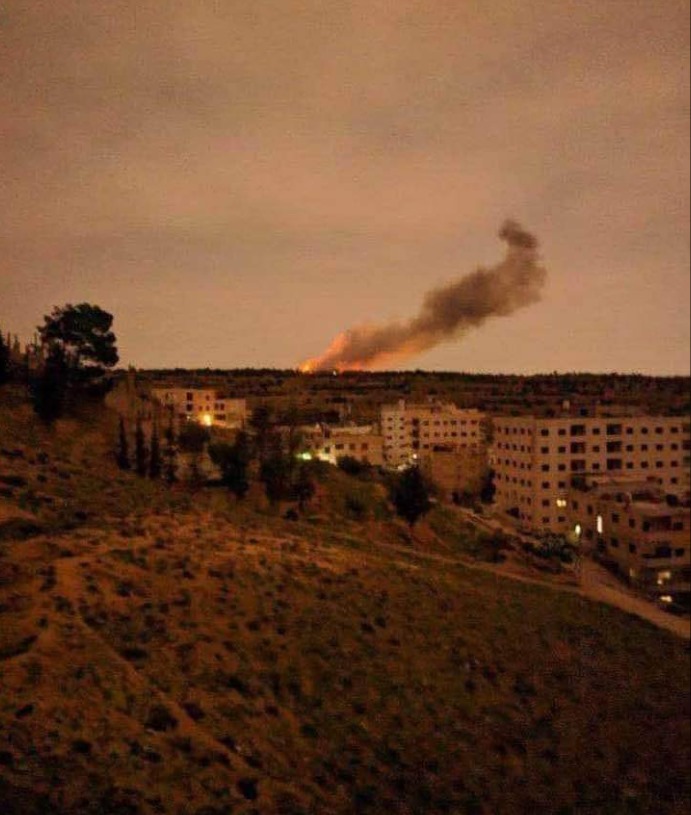
Syria – General:
(March 21) Reports that two convoys (of 10 cars each) belonging to the Irish Peace Force had left Irish outposts in the rural areas of Quneitra and the Yarmouk Basin towards Damascus. On March 5, it was reported in Ireland that the peace force was about to withdraw from the Golan Heights in early April.
Shiite Axis – General:
(March 24) an American base near Abu Hajar Airport in the Kharab al-Jair area was attacked, after it was reported yesterday that a plane with weapons and logistic equipment had landed there seemingly taking off from Iraq to Syria.
This was the first attack against an American base in Iraq/Syria since February 20 (it is unclear whether on March 10 the American base in CONOCO (eastern Syria) was also attacked by a UAV, possibly a mistaken report).
Since October 2023, there have been more than 160 shooting incidents at U.S. bases in Iraq and Syria, mostly in eastern Syria.
During the past week the Shiite militias in Iraq claimed responsibility for three incidents in which they claimed they had fired UAVs at Israel:
(March 20) Accepted responsibility for launching a UAV at Ben Gurion Airport. There are no other indications.
(March 21) Accepted responsibility for launching a UAV at the power plant in Tel Aviv. There are no other indications.
(March 24) Accepted responsibility for launching a UAV at the Defense Ministry building in Tel Aviv. There are no other indications.
(March 24) The commander of the Shi’ite militia in Iraq, Kataeb Sayyid al-Shahdaa, Abu Alaa al-Wulai, issued a statement that the militia would soon begin attacking Israel’s ports in the Mediterranean, refineries, bases, airports and power plants. To date, no damage has been reported by UAVs launched from Iraq. Apparently, in most of the incidents the UAVs, if they were launched, did not manage to reach Israeli territory.
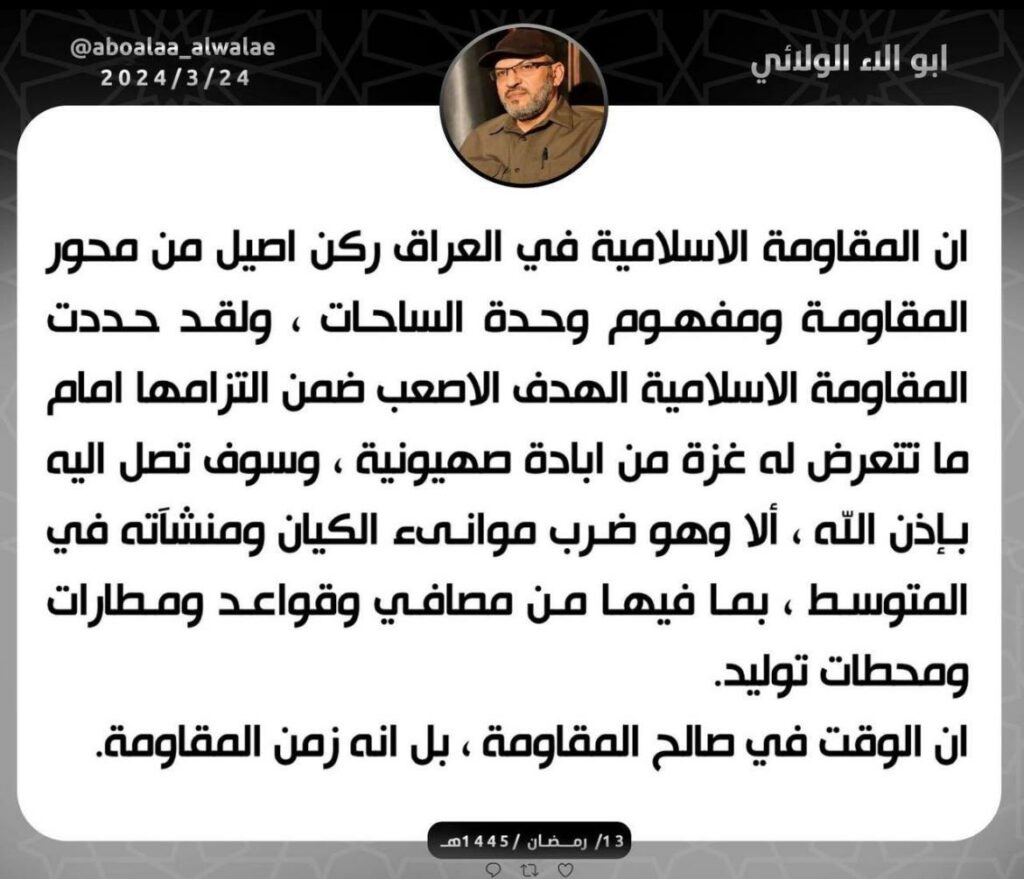
Yemen – Houthi-land:
During the past week, coalition forces managed to hit 8 UAVs, 7 anti-ship missiles, 3 ammunition depots, 3 underground warehouses, 2 unmanned vessels, and 2 ballistic missiles launched or intended for launch by the Houthis.
On March 18, the Houthis fired a cruise missile (not a UAV as initially reported) at Israel – near the city of Eilat.
(March 21) A target heading toward Israel over the Red Sea was intercepted.
(March 23) A Chinese tanker, HUANG PU, flying the Panamanian flag was attacked twice. For the first time, 4 anti-ship ballistic missiles (ASBMs) were fired at it. In the second attack, the Houthis managed to strike the ship with a ballistic missile. A fire broke out on board the ship, which was extinguished within half an hour. Minimal damage was caused. The Houthis attacked the Huang despite previously stating that they would not attack Chinese vessels.
Since October 2023, there have been 94 Houthi shooting incidents against ships and the like.






